2024 Jeep Grand Wagoneer Reviews, Prices and Specs
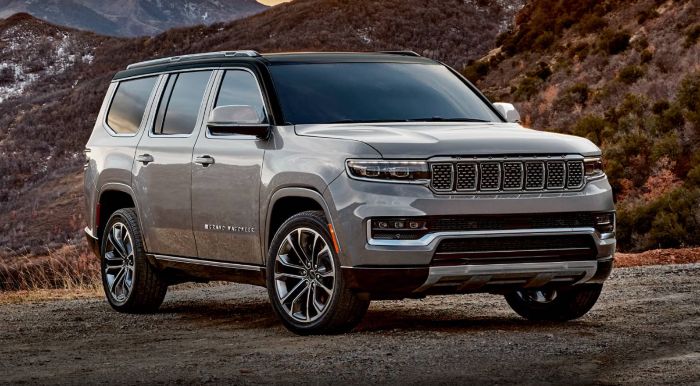
Overview
The 2024 Jeep Grand Wagoneer stands as the epitome of luxury within the Jeep lineup, seamlessly blending Jeep’s renowned off-road prowess with formidable towing capabilities and a spacious three-row seating arrangement. Built upon the foundation of the Jeep Wagoneer, this truck-based SUV retains its dimensions while elevating standard features and interior quality. For those seeking additional space, the Grand Wagoneer L (reviewed separately) offers expanded rear cargo room. Representing a pinnacle of opulence, the Grand Wagoneer and Grand Wagoneer L rival prestigious counterparts like the Land Rover Range Rover, Cadillac Escalade, and Lincoln Navigator. Embellished with Nappa leather and genuine wood accents, the cabins exude opulence and sophistication, yet remain adept off-road, living up to the esteemed Jeep name.
What’s New for 2024?
The Series II trim and V8 engine option have been phased out. Now, the Grand Wagoneer comes equipped with a standard 510-horsepower turbocharged 6-cylinder engine. This change in engine configuration signifies a departure from the V8 option. Additionally, minor adjustments have been made to the trim level nomenclature. These updates are part of the evolution of the second-generation Grand Wagoneer introduced in 2022.
2024 Jeep Grand Wagoneer Models and Pricing
The 2024 Jeep Grand Wagoneer kicks off at $91,445 for the base trim with the standard wheelbase. Opting for the elongated Grand Wagoneer L will require an investment of $94,445 for those needing extra space. At the pinnacle of the lineup sits the Grand Wagoneer L Series III Obsidian, priced at $115,640. For those considering alternatives within the Jeep family, the Jeep Wagoneer or Jeep Grand Cherokee offer more budget-friendly or compact options. In comparison to rivals, Grand Wagoneer prices fall within the mid-range of the spectrum. For instance, the Cadillac Escalade and Lincoln Navigator begin in the low $80K range, while the Range Rover starts near $107,000, and the Mercedes-Benz GLS commences at over $87,000.
| Grand Wagoneer | $91,445 |
| Grand Wagoneer L | $94,445 |
| Grand Wagoneer Obsidian | $103,040 |
| Grand Wagoneer L Obsidian | $106,040 |
| Grand Wagoneer Series III | $111,045 |
| Grand Wagoneer L Series III | $114,045 |
| Grand Wagoneer Series III Obsidian | $112,640 |
| Grand Wagoneer L Series III Obsidian | $115,640 |
Wide-Open Spaces Interior
The standard Grand Wagoneer already offers ample passenger space, accommodating 6-footers comfortably in all three rows. Even with tall passengers in each row, there’s enough room for everyone. In the extended Grand Wagoneer L, the third row features two 1.8-liter storage compartments for items like phones and accessories.
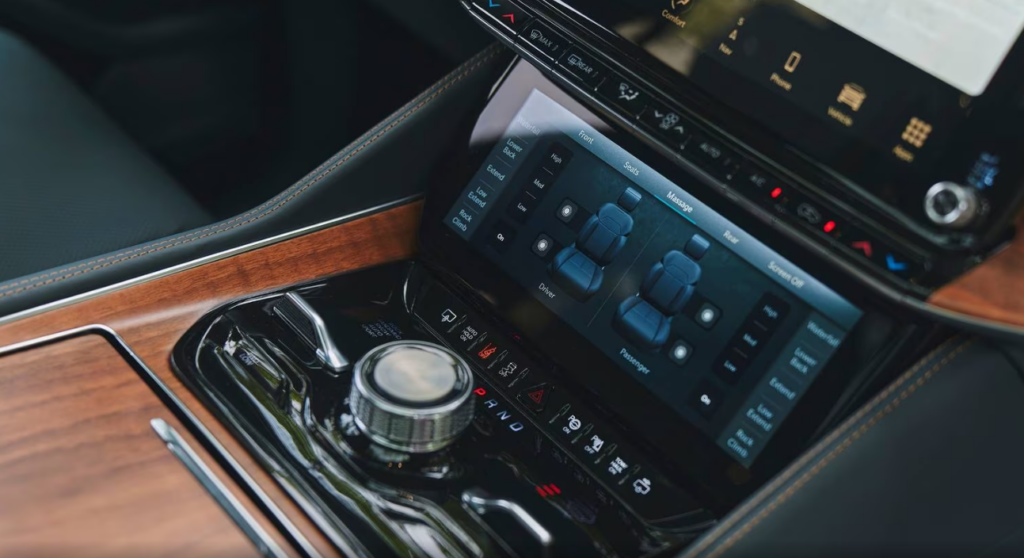
In the Grand Wagoneer L models, standard second-row captain’s chairs provide seating for seven occupants. Alternatively, a 3-person center bench is available as an option. However, we prefer the captain’s chairs for their enhanced comfort and easier access to the third-row seat.
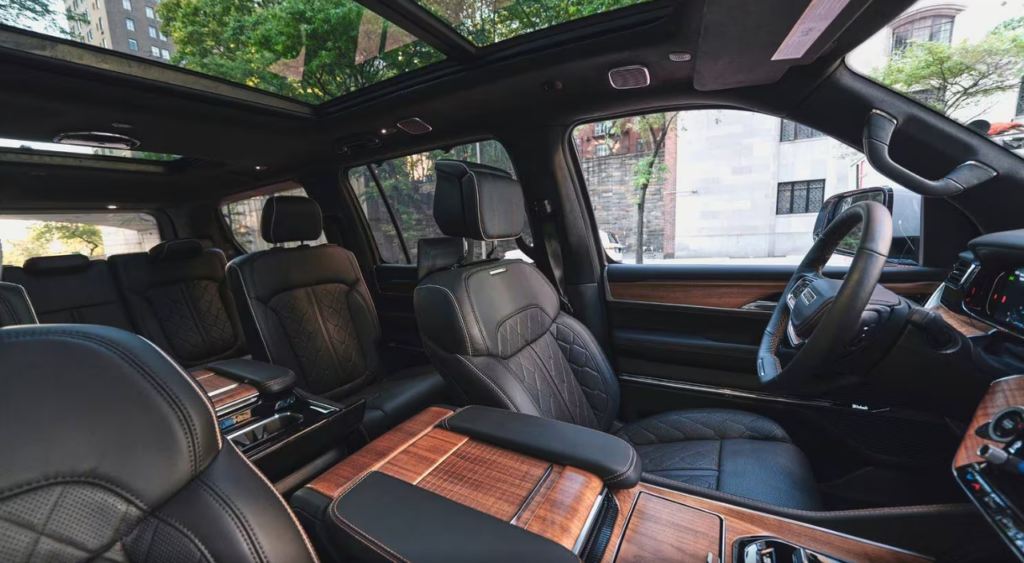
Legroom remains consistent across the first, second, and third rows in both the Grand Wagoneer and Grand Wagoneer L, measuring 40.9, 42.7, and 36.6 inches, respectively. These measurements position the Grand Wagoneer models competitively within the segment.
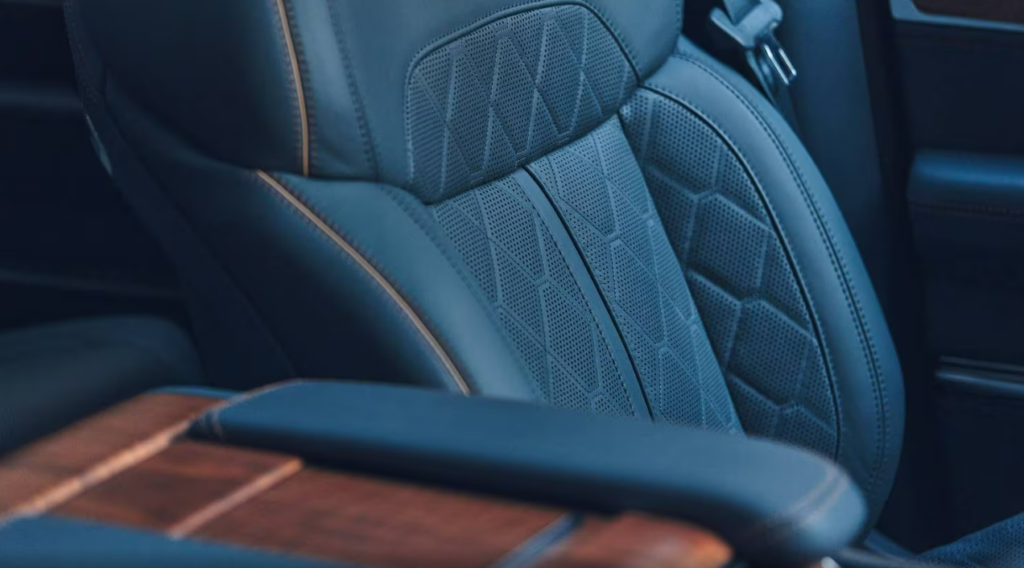
When considering daily cargo needs, the volume behind the third row is crucial. The standard Grand Wagoneer offers 27.4 cubic feet of cargo space behind the third row, expanding to 70.9 cubic feet with the third-row seats folded and 116.7 cubic feet with both rear rows folded. For comparison, the GMC Yukon offers similar cargo space, with 25.5, 72.6, and 122.9 cubic feet, respectively.
Cargo capacity increases significantly in the Grand Wagoneer L, providing 44.2 cubic feet of space behind the third row, 88.8 cubic feet behind the second row, and 130.9 cubic feet with both rear rows folded. Comparatively, the 2023 Cadillac Escalade ESV offers 41.5, 94.1, and 142.8 cubic feet of cargo space, respectively.
Classic Exterior
The Grand Wagoneer and Grand Wagoneer L boast a handsome design, albeit somewhat understated. They share a similar appearance, with the Grand Wagoneer L featuring noticeably longer back doors and a more extended rear overhang.
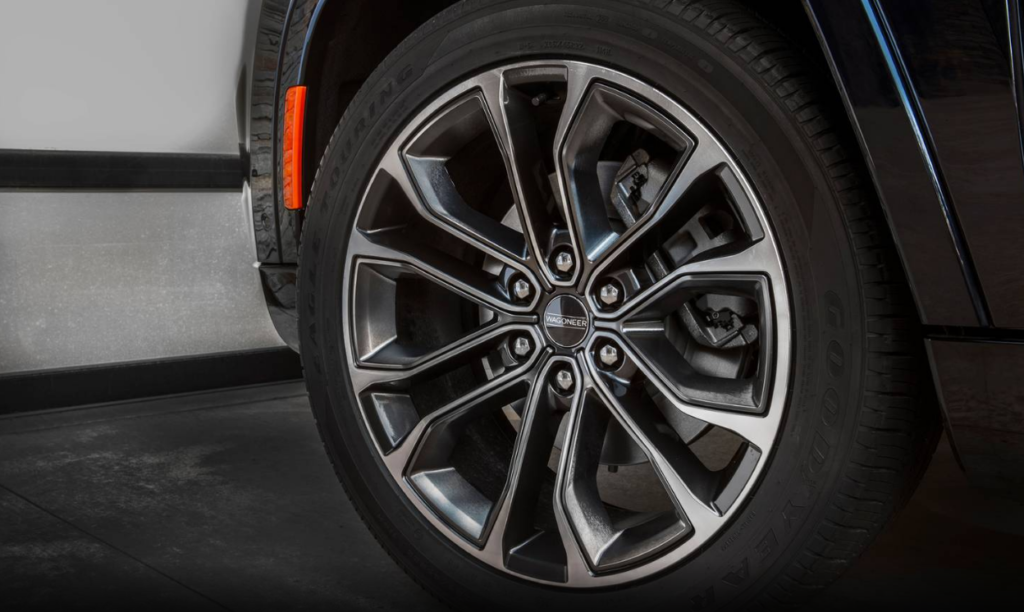

Setting them apart from the standard Wagoneer are unique features such as a standard 2-tone black roof, distinctive hood design, fender flares, and premium LED lighting.

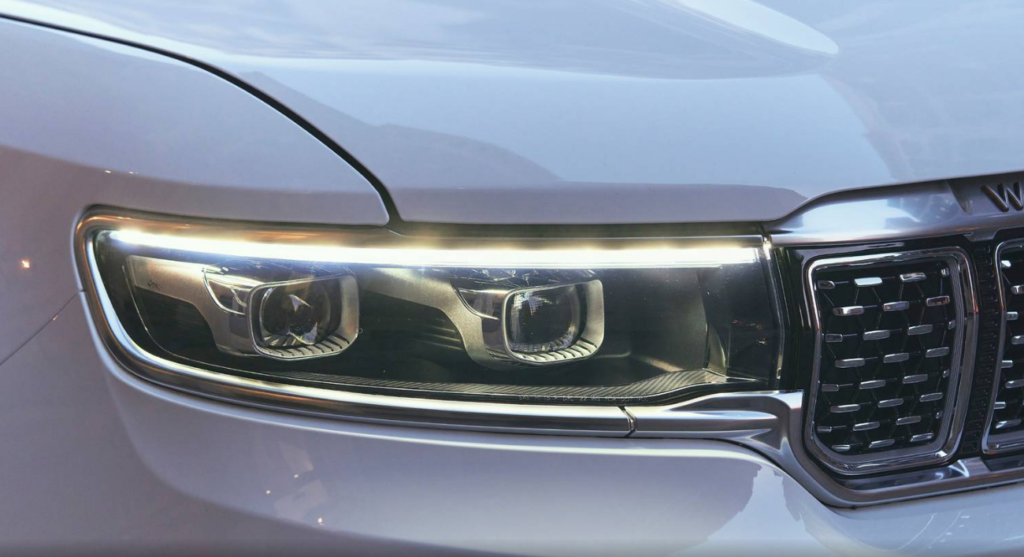
Additionally, they come equipped with 20- or 22-inch aluminum wheels, whereas the standard Wagoneer rides on 18-inch alloy wheels.
Specifications
Taking a cue from the “Less Is More” philosophy, Jeep has streamlined its engine lineup, opting for the impressive twin-turbo 6-cylinder engine paired with an 8-speed automatic transmission. With 510 horsepower under the hood, the Grand Wagoneer can accelerate from 0 to 60 mph in under 5.5 seconds, a remarkable feat for a vehicle of its size. Additionally, the Grand Wagoneer boasts an impressive towing capacity of up to 10,000 pounds, surpassing competitors like the Chevy Suburban and Lincoln Navigator, which can tow a maximum of 8,300 pounds.
For warranty coverage, Jeep offers the standard bumper-to-bumper limited warranty, providing three years or 36,000 miles of coverage, whichever comes first. The limited powertrain coverage extends to five years or 60,000 miles.
In terms of safety ratings, while the National Highway Traffic Safety Administration has not conducted crash tests on the Jeep Grand Wagoneer models, the Insurance Institute for Highway Safety has performed six tests, awarding the Grand Wagoneer the highest score of Good in four of them. However, in the remaining two tests, which assessed small overlap scenarios for the front, the Grand Wagoneer received a Marginal score for the driver’s side and a Poor score for the passenger side.